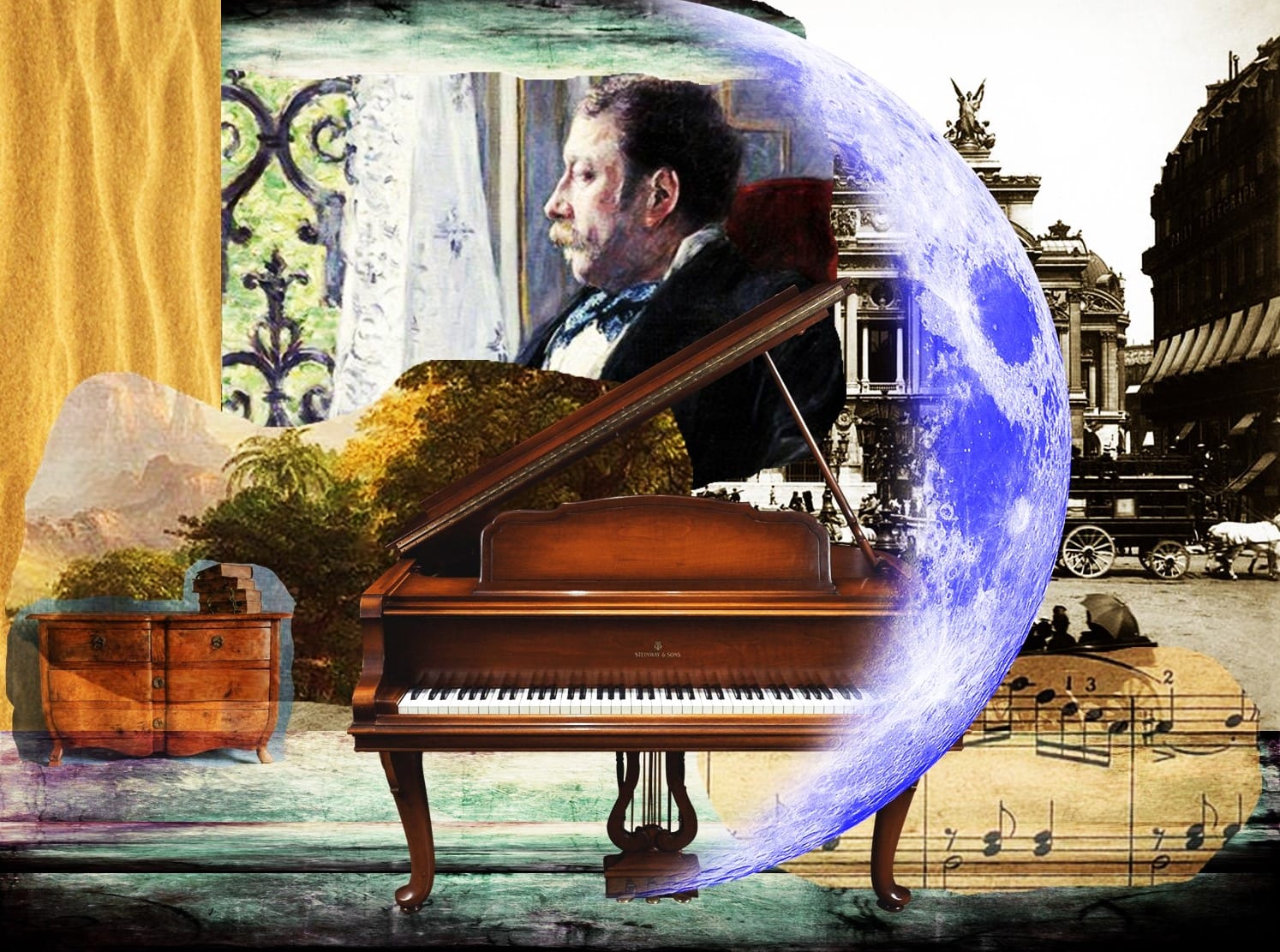The Sound of Grace: Erik Satie and Gymnopédie No. 1

Perhaps you feel as I do about Gymnopédie No. 1, regarding it as a melody of the mind possessed of a certain sadness, yet radiant and peaceful, as well. In any event, please digress momentarily to enjoy it.
Yes, if you are American, and remember it as the background music for a cough lozenge commercial, you are correct, and tragically so. The melody was commandeered by advertisers on many occasions, becoming a theme of commerce for years. Happily, however, the piece experienced this without losing its aural impact. As for its timeless quality, Gymnopédie No. 1 exemplifies the way in which simple tunes prevail, evoking the most complex and haunting emotions the heart can attain.
Rising melodically from two chords, the piece concludes by shifting to minor, as if to resolve the listener's certainty with a slight nudge. As a composer, Satie understood that discord is sometimes the resolution favored by life. In the two Gymnopédie compositions that followed, the simple melodic structure continued, suggesting that multiple iterations are, at times, necessary to explore an idea.
And the simplest things often encompass the greatest variety of forms.

Erik Satie was an eccentric, if ever one existed, a product of late nineteenth century Romanticism who read daily at the French National Library and was known, in later life, for wearing the garb of bankers, this, while living in near poverty as an inventor of sounds. Perhaps his orderly appearance was a reflection of his deeper self, the visionary who governed his activities with care, each movement of the day unfolding like a devotion.
In every way, Satie was precise and beautifully attuned to regulating practices. He kept a strict routine, even scheduling the time of day at which he would be inspired to create, and, intriguingly, included the physical measurement of sound--the movements of various compositions and the noises around him--in his intellectual endeavors. All such eccentricities render him memorable.
Born in France in 1866, Erik-Alfred-Leslie Satie is considered one of the most unusual composers of the time, being a student of esoteric practices as well as a musician.
Near the end of his life, Satie studied sixteenth century counterpoint and concluded his career by writing what he called "furniture music." In this endeavor, he composed with interior decoration in mind. The idea had to do with the ubiquity of music and its ability to blend, to coexist with furniture as an element of the human environment. More than this, however, Satie is simply a creator of atmosphere, in my estimation, a shaper of less discernable things, like the feeling of two chords drifting through a sunlit library or circling the kitchen window with an invitation to venture outside. For me, Gymnopédie No. 1 brings these elements to mind, with beautiful urgency, and refreshes my own daily routine in the process.
A prophet of Romanticism, Satie's work heralded the mechanized destruction of the twentieth century, granting us a pure melody by which to embrace the age. He died in 1925 at the age of 59.
Notes on the Translation of Gymnopédie
During my research, I found a consensus that the word gymnopédie translates into gymnastics or nakedness, in the sense of presenting raw contortions of expression, elements unclothed before the spectator. Satie and other French intellectuals of the nineteenth century generally used the term as a neologism.
For Further Reading:
Rudhyar Chenneviere, Frederick H. Martens. "Erik Satie and the Music of Irony"(The Musical Quarterly) Vol. 5, No. 4 (Oct., 1919), pp. 469-478 (11 pages).
Davis, Mary E. Erik Satie (London: Reaktion, 2007).
Gillmore, Alan M. Erik Satie (Boston: Twayne Publishers, 1988).
Myers, Rollo H. Erik Satie (New York: Dover Publications, 1968).
Thorman, Mark. "John Cage's 'Letters to Erik Satie'" (American Music) Vol. 24, No. 1 (Spring, 2006), pp. 95-123 (29 pages)
Archival Collections:
The papers of Erik Satie, including composition fragments, correspondence, essays, and drawings, are housed at the Houghton Library of Harvard University (Identifier: MS Mus 193). As of this writing, the collection is open for research, although the originals "are restricted from use."
Les expositions organisées par la Bibliothèque
Visit the Bibliothèque nationale de France online to learn about the 1966 Satie retrospective.